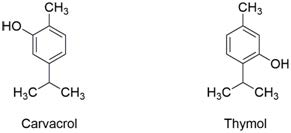1.Dibner JJ, Richards JD. Antibiotic growth promoters in agriculture: History and mode of action. Poult Sci. 2005; 84(4): 634-643. doi: 10.1093/ps/84.4.634
2.Lan Y, Verstegen M, Tamminga S, Williams B. The role of the commensal gut microbial community in broiler chickens. Worlds Poultry Science Journal. 2005; 61(01): 95-104. doi: 10.1079/wps200445
3.Lin J, Hunkapiller AA, Layton AC, Chang Y-J, Robbins KR. Response of intestinal microbiota to antibiotic growth promoters in chickens. Foodborne Pathog Dis. 2013; 10(4): 331-337. doi: 10.1089/ fpd.2012.1348
4.Mehdi Y, Létourneau-Montminy MP, Gaucher ML, et al. Use of antibiotics in broiler production: Global impacts and alternatives. Anim Nutr. 2018; 4(2): 170-178. doi: 10.1016/j.aninu.2018.03.002
5.Blair JMA, Webber MA, Baylay AJ, Ogbolu DO, Piddock LJV. Molecular mechanisms of antibiotic resistance. Nat Rev Microbiol. 2014; 13(1): 42-51. doi: 10.1038/nrmicro3380
6.Boamah VE, Agyare C, Odoi H, et al. Prevalence and antibiotic resistance of coagulase-negative Staphylococci isolated from poultry farms in three regions of Ghana. Infect Drug Resist. 2017; 10: 175-183. doi: 10.2147/idr.s136349
7.Mitsch P, Zitterl-Eglseer K, Kohler B, et al. The effect of two different blends of essential oil components on the proliferation of Clostridium perfringens in the intestines of broiler chickens. Poult Sci. 2004; 83(4): 669-675. doi: 10.1093/ps/83.4.669
8.Oviedo-Rondon EO, Hume ME, Hernandez C, Clemente-Hernandez S. Intestinal microbial ecology of broilers vaccinated and challenged with mixed Eimeria species, and supplemented with essential oil blends. Poult Sci. 2006; 85(5): 854-860. doi: 10.1093/ ps/85.5.854
9.Steiner T. Phytogenics in Animal Nutrition: Natural Concepts to Optimize Gut Health and Performance. Nottingham, England: Nottingham University Press. 2010.
10.Suresh G, Das RK, Brar SK, et al. Alternatives to antibiotics in poultry feed: Molecular perspectives. . 2018; 44(3): 318-335. doi: 10.1080/1040841x.2017.1373062
11.Griffin SG, Wyllie SG, Markham JL, Leach DN. The role of structure and molecular properties of terpenoids in determining their antimicrobial activity. Flavour and Fragrance Journal. 1999; 14(5): 322-332. doi: 10.1002/(sici)1099-1026(199909/10)14:5<_x0033_22:_x003a_aidffj837>3.0.co;2-4
12.Memar MY, Raei P, Alizadeh N, et al. Carvacrol and thymol: strong antimicrobial agents against resistant isolates. Reviews in Medical Microbiology. 2017; 28(2): 63-68. doi: 10.1097/ mrm.0000000000000100
13.Burt S. Essential oils: Their antibacterial properties and potential applications in foods—a review. International Journal of Food Microbiology. 2004; 94(3): 223-253. doi: 10.1016/j.ijfoodmicro.2004.03.022
14.Nazzaro F, Fratianni F, Martino LD, Coppola R, Feo VD. Ef- fect of essential oils on pathogenic bacteria. Pharmaceuticals (Basel). 2013; 6(12): 1451-1474. doi: 10.3390/ph6121451
15.Veldhuizen EJ, Zweijtzer C, Burt SA, et al. Structural requirements for the antimicrobial activity of carvacrol. J Agric Food Chem. 2006; 54(5): 1874-1879. doi: 10.1021/jf052564y
16.Ultee A, Bennik MHJ, Moezelaar R. The phenolic hydroxyl group of carvacrol is essential for action against the food-borne pathogen bacillus cereus. Appl Environ Microbiol. 2002; 68(4): 1561- 1568. doi: 10.1128/aem.68.4.1561-1568.2002
17.Helander IM, Alakomi HL, Latva-Kala K, et al. Characterization of the action of selected essential oil components on gramnegative bacteria. J Agric Food Chem. 1998; 46(9): 3590-3595. doi: 10.1021/jf980154m
18.Arfa AB, Combes S, Preziosi-Belloy L, Gontard N, Chalier P. Antimicrobial activity of carvacrol related to its chemical structure. Lett Appl Microbiol. 2006; 43(2): 149-154. doi: 10.1111/j.1472- 765x.2006.01938.x
19.Garcia-Salinas S, Elizondo H, Arruebo M, Mendoza G, Irusta S. Evaluation of the antimicrobial activity and cytotoxicity of different components of natural origin present in essential oils. Molecules. 2018; 23(6). doi: 10.3390/molecules23061399
20.Gauthier R. Intestinal health, the key to productivity: The case of organic acids. 2002.
21.Si W, Gong J, Tsao R, et al. Antimicrobial activity of essential oils and structurally related synthetic food additives towards selected pathogenic and beneficial gut bacteria. J Appl Microbiol. 2006; 100(2): 296-305. doi: 10.1111/j.1365-2672.2005.02789.x
22.Mathlouthi N, Bouzaienne T, Oueslati I, et al. Use of rosemary, oregano, and a commercial blend of essential oils in broiler chickens: In vitro antimicrobial activities and effects on growth performance. J Anim Sci. 2012; 90(3): 813-823. doi: 10.2527/jas.2010- 3646
23.Hashemi S, Davoodi H. Phytogenics as new class of feed additive in poultry industry. Journal of Animal and Veterinary Advances. 2010; 9(17): 2295-2304. doi: 10.3923/javaa.2010.2295.2304
24.Jamroz D, Orda J, Kamel C, et al. The influence of phytogenic extracts on performance,nutrient digestibility, carcass characteristics, and gut microbial status in broiler chickens. Journal of Animal and Feed Sciences. 2003; 12(3): 583-596. doi: 10.22358/ jafs/67752/2003
25. Zhai H, Liu H, Wang S, Wu J, Kluenter AM. Potential of essential oils for poultry and pigs. Animal Nutrition. 2018; 4(2): 179-186. doi: 10.1016/j.aninu.2018.01.005






